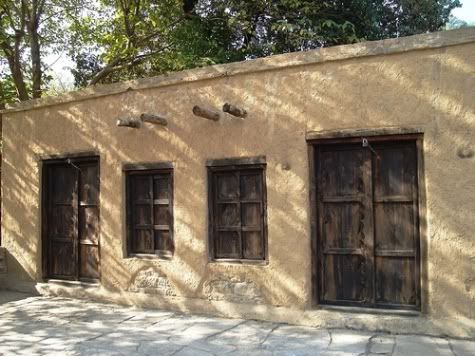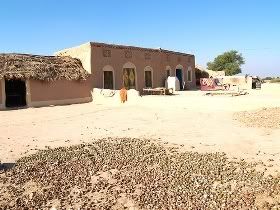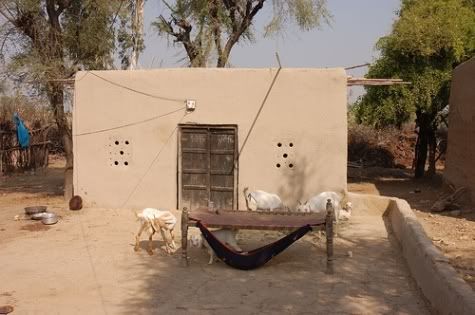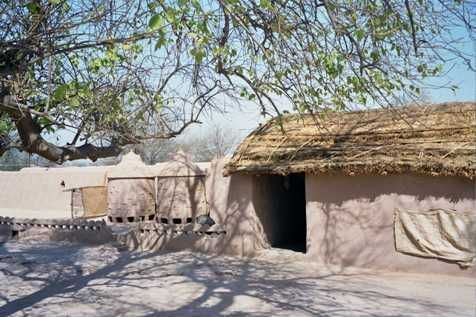The future lies in mud architecture. Though this sweeping statement may sound prehistoric, but it is very relevant to modern times. Building living spaces with mud is a tradition dating back to the start of civilizations. Some excellent examples from the Great Mosque – the world’s largest mud building and UNESCO’s World Heritage site to the oldest surviving mud specimens found in the Harappa Pakistan, show the continuation and importance of mud buildings.

Having grown up in a mud house myself (before I moved to urban centre), mud buildings have a special place rooted deep into my cultural consciousness and this personal bond encourages a more intimate relationship between me and the mud as the material transformed from formlessness to form. That is the reason why I am interested in mud architecture and I see its bright future in Pakistan.
Why use Mud? Mud – a mixture of earth and water – is economical, practical, functional and attractive. It is easy to work with, and it takes decoration well. Mud is especially useful in humid and hot climates like we have in Pakistan. Mud is a natural material that is found in abundance, especially where other building materials such as bricks, stone or wood are scarce due to affordability and or availability. In Pakistan, use of mud has evolved from local necessity. Which is why the use of extremely sticky mud deposited found along river banks or elsewhere in Pakistan combined with appropriate technology makes an excellent material to build functional and climate friendly buildings.
 Work has already started and many experts are critically analysing the more purposeful use of mud as a building material. Dr Gus Van Beek of the Department of Anthropology, National Museum of Natural History is working on a book in which he is examining methods of construction and varieties of designs in contemporary as well as ancient structures found at many places. Dr Gus Van Beek’s research started when he uncovered arch and vault construction at Tel Jemmeh, Israel. Dr Gus Van Beek is covering major types of construction in Morocco, Egypt, Yemen, Israel, Syria, Iraq, Iran, India and Pakistan.
Work has already started and many experts are critically analysing the more purposeful use of mud as a building material. Dr Gus Van Beek of the Department of Anthropology, National Museum of Natural History is working on a book in which he is examining methods of construction and varieties of designs in contemporary as well as ancient structures found at many places. Dr Gus Van Beek’s research started when he uncovered arch and vault construction at Tel Jemmeh, Israel. Dr Gus Van Beek is covering major types of construction in Morocco, Egypt, Yemen, Israel, Syria, Iraq, Iran, India and Pakistan.
At local level, Society for the Promotion of Art and Culture (SPARC), registered in Lahore since 1994, is undertaking the task of revival of much needed mud architecture in Pakistan. SPARC planning to hold workshops at different art and architecture institutions in order to restart the traditional building with mud in rural as well as urban areas of Pakistan. These workshops will not only create awareness and initiate a thought process at grass roots level but will also train SPARC employees in mud architecture. Dr Norbert Pintsch from Senior Expert Service (Bonn, Germany) is planning to present new techniques of mud building to adapt the construction technique mixed with appropriate technology in Pakistan.

Prof Dr Norbert Pintsch is an experienced architect by profession and mud enthusiast by choice. Since completing first building project as an architect at the age of 18, Prof Dr Norbert Pintsch has been in various activities as an architect and civil engineer all his life. One of the best starting point for Prof Dr Norbert Pintsch may be a mud building that stands in Peerzada Festival Area, Green Acre, Lahore. Renowned Pakistani architect like Ghayyoor Obaid are also interested in mud architecture. Any other example that I know of is remains of Sher Shah Suri built mud fort in historic village Sher Ghar near Okara.

The mud architecture is a great resource that focuses on architecture constructed of mud brick, rammed earth, compressed earth block and other methods of earthen construction. The proliferation of the concept to use mud and improved techniques in order to raise the level of living in the population is a very welcome idea and we in Pakistan need that. This can go a long way not only in the form of changing the look of population centres, rural as well as urban, but also in solving environmental problems and problems related to the use of energy and other finite resources.
A version of this post also appeared in the daily Nation
Photo Credits: 1. Alana McConnon; 2. Qaisar Raja Ghaffar; 3. It’s a Sorry Lorry, Morry



















































Interesting article. I was in a village called Kasur, near Lahore. They had some flat roofed earth buildings which were just fascinating. The mud plaster, craftsmenship, the roof were exquisite. But unfortunately they are being replaced by modern construction material. I asked an elderly person about his perception on the mud building and he said, there is a “firman” that when all the mud buildings are replaced, then the prophet will come back again. Is that a common perception?
But anyways its a great initiative. We are doing similar stuff in Nepal, please check http://www.abari.org
S.A.J. Shirazi,
Please visit our web site to view the next technology for construction of homes utilizing earth. We are currently in research and this technology has the potential to be used world wide.
I would like to communicate with Dr. Gus Van Beek and Dr. Norbert Pintsch.
Thank You for the article on Earthen Construction.
Warmest Regards.
Gary Hames
EarthCo Building Systems, Inc.
I just saw the following photo series on the BBC News website:
http://tinyurl.com/pvj4ab
The Muslims of Gaza are now re-building their lives using mud bricks! A Palestinian had travelled to South Asia and saw how the people lived in mud dwellings, and used the idea in Gaza. Now it is recieving funding and help, and the people are building their own mud brick homes.
One can romanticize the mud architecture, but it goes only with a completely different life style.That life style is linked with living in a village where cheap labour, raw material (clay) and wheat chaff (binder), and highly plastic clay for a yearly plastering (from the local pond) are readily available.
Mud architecture is more sucessfull in arid regions where clay is avaialble but rainfall is insignificant, areas in Baluchistan (Sibi planes) and Upper Sindh and south Punjab are more suitable for such an architecture than North Punjab and Pakhtunkhawa. Sahel region of Africa (Niger, Mali etc ) has some wonderfull historical mud arcitecture, where clay is avaialble from inland lakes and it is extremely arid.
Very interesting article and great comments. My ancestral home in- once-suburb now within lahore- baghbanpura, was constructed of burnt clay bricks cemented with mud. The brick walls are 9 to 18 inches thick.
The house is three stories with 20 rooms. The walls were plastered with cement layer and painted. The painted cement surface does not give out the mud wall construction. However better thermal characterstics are evident. Its much comfortable in summer. I recall some rooms, especially ones with high ceilings were much cooler and we would spend the summer days in them without even needing use of fan.
The home is now being used as a school.